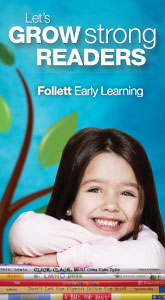ExchangeEveryDay Past Issues
 << Previous Issue
| View Past Issues | | Next Issue >>
<< Previous Issue
| View Past Issues | | Next Issue >> -David Sobel
Fifteen-year-olds in the United States score in the middle of the developed world in reading and science while lagging in math, according to results reported in the New York Times for the The Program for International Student Assessment, commonly known as PISA.
PISA was administered to 15-year-olds in 65 countries. As in previous years, the scores of students in Shanghai, Hong Kong, Singapore, Japan and South Korea put those school systems at the top of the rankings for math, science and reading.
In the midst of increasingly polarized discussions about public education, the scores set off a familiar round of hand-wringing, blaming and credit-taking:
“The United States’ standings haven’t improved dramatically because we as a nation haven’t addressed the main cause of our mediocre PISA performance — the effects of poverty on students,” Dennis Van Roekel, president of the National Education Association, the nation’s largest teachers union, said in a statement.
Jack Buckley, the commissioner of the National Center for Education Statistics, noted that American students from families with incomes in the highest quartile did not perform as well as students with similar backgrounds in other countries.
An increasingly vocal group of parents, teachers, union leaders and others have also objected to a focus on standardized tests at the expense of values like creativity. “The question is, can we walk and chew gum at the same time?” said Michael J. Petrilli, executive vice president of the Thomas B. Fordham Institute, a conservative education policy group. “There’s no reason why we can’t keep the creativity that we value while also teaching kids how to do math better.”
Powerful Interactions: How to Connect |
 In their inspiring book, Powerful Interactions: How to Connect with Children to Extend Their Learning, authors Amy Laura Dombro, Judy Jablon and Charlotte Stetson provide a multitude of ideas for creating positive, life-affirming connections with children. In their inspiring book, Powerful Interactions: How to Connect with Children to Extend Their Learning, authors Amy Laura Dombro, Judy Jablon and Charlotte Stetson provide a multitude of ideas for creating positive, life-affirming connections with children. This reflective guide contains everything you need to understand what Powerful Interactions are, how to make them happen, and why they are so important in increasing children's learning and your effectiveness as a teacher. |




Comments (4)
Displaying All 4 CommentsUnited States
More and more information about our education system when compared to everyone else. Has anyone thought of going overseas to observe what is being done right or are we just so self-inflated that we think we cannot learn from others? More blame and finger pointing will not solve any problem. We now live in a "global community" that will explode beyond our imaginations and our children will be expected to compete "globally" not in the United States of America only. We need to adapt and break the barriers whatever they are and test a variety of learning modes that can help our children.
United States
My 11 year-old granddaughter was extolling the virtues of her teacher, telling how the woman she so admires ("I love, love, love my teacher!") employs music for math lessons. This child, a very creative communicator from her earliest musings, enthusiastically jumped up and down singing her knowledge, practicing the fundamentals to her heart's content! So let's get on it, people! Open yourselves to innovation...
Penn State University
United States
It is also worth noting in passing that Massachusetts, looked at separately scores well above the rest of the nation, with scores in math that place it as the 16th highest unit tested. It would be worth looking at what goes on from one state to another -- and I suspect money spent on schools matters.
Kids' World
Bellingham , WA, United States
The United States of America has the greatest diversity of population when compared to any other country in the developed or developing world.
Ethnically, culturally , socially, economically, traditionally, et al. We are more diverse than anywhere else in the world.
But we are no longer a melting pot. We are a jigsaw puzzle of people groups and social groups. Consciously and unconsciously we have developed this way.
Yet for all our diversity we insist on one model for educating the masses.
When we compare ourselves to other developed countries and regions to see how our educational outcomes stack up, we fall far short of the top.
The PISA was administered to 15-year-olds in 65 countries. As in previous years, the scores of students in Shanghai, Hong Kong, Singapore, Japan and South Korea put those school systems at the top of the rankings for math, science and reading.
If you look into a classroom and then into the homes of those students you will see many things in common.
If you look Into the classroom and the homes of the communities across America you will see very little in common.
This is our greatest challenge and our greatest opportunity .
Children from vastly different family structures, economic and social groups,
religions and traditions, values and goals, language and culture, ..................
How can we successfully and effectively deliver educational content to such a diverse classroom ? From one teacher, in front of this mosaic student population?
When our educational systems were developed, our classrooms were filled primarily with groups of children who came from common backgrounds and understandings.
Our country changed, but our educational system has stayed the same.
Teaching to the homogeneous brain that no longer exists.
"The more ways you teach, the more kids you reach. "
We still have very successful institutions of higher learning here in America, although they are quickly becoming less so.
Currently Public Monies available for higher education allow the student and families to choose the school and the monies follow the student.
As we see this become more constricted, we see less success and diversity in our higher ed system.
Education must move to a "monies follow the child(student)" model with few restrictions. From birth to grave, public monies must be allowed to span the diversity of our population.
Only through greater diversity will we achieve greater unity, equality, justice, success,
Hundreds off small schools, hundreds of choices for the children and families where currently one choice exists for most.
Our community just passed a bond to spend 160 million to rebuild a high school .
Just for a building ,that will "allow us to do the same for another 50 years"
What if we spent 1 million on 160 small diverse high schools?
Our greatest asset is our diversity. We must teach to our diversity.
Let the money follow the student.
Then our children will have the educational choices that honor and support their diversity.
Post a Comment